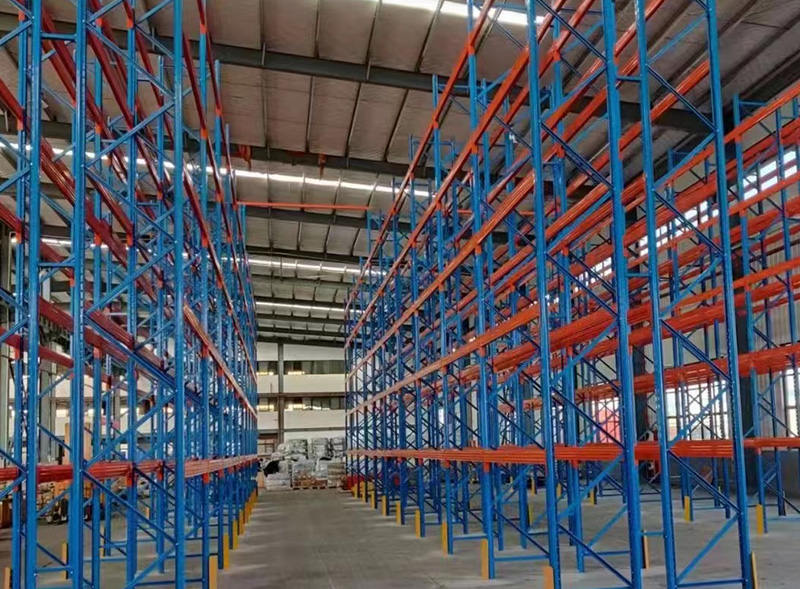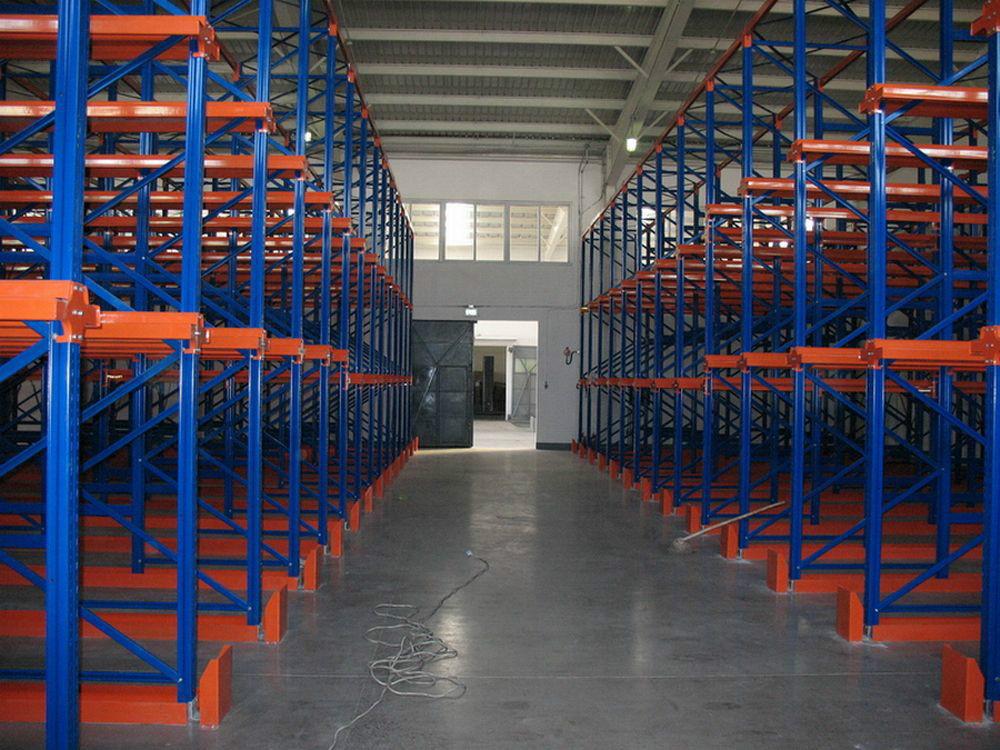The unassuming rack is a fundamental structural element underpinning organization and efficiency across countless industries. From towering warehouse systems storing vast inventories to sleek server enclosures housing critical IT infrastructure, racks provide essential support, access, and space optimization. Rack manufacturing is a sophisticated field blending engineering precision, material science, and advanced fabrication techniques to create these vital structures. This comprehensive guide delves into the world of rack manufacturing, exploring its core aspects, processes, and the diverse applications it serves.

Understanding Rack Manufacturing: More Than Just Metal
At its core, rack manufacturing involves the design, fabrication, and assembly of structural frameworks designed for storage, support, organization, or display. While often associated with metal (steel being predominant), rack manufacturing can also encompass wood, plastic, and composite materials depending on the application. The process transforms raw materials into precisely engineered components that, when assembled, meet specific load-bearing, dimensional, and functional requirements. Successful rack manufacturing hinges on understanding client needs, material properties, production capabilities, and rigorous quality control.
1. The Backbone: Materials and Design in Rack Manufacturing
The foundation of any rack system lies in its design and the materials chosen. Rack manufacturing relies heavily on robust and versatile materials:
Steel: The undisputed champion, particularly hot-rolled or cold-rolled steel. It offers exceptional strength-to-weight ratio, durability, and formability. Grades like A36 (mild steel) are common for general use, while higher-strength steels (like A500) are used for heavy-duty pallet racking. Stainless steel (e.g., 304, 316) is crucial for corrosive environments (food processing, pharmaceuticals, marine).
Aluminum: Valued for its lighter weight, natural corrosion resistance, and good strength. Common in applications like aerospace component storage, retail displays, and electronics racks where weight is a concern. Often used in extrusions.
Other Materials: Wood is used for lighter-duty storage or aesthetic displays. Plastics and composites find niches in specialized, often non-structural, applications or components like bin dividers.
Design is paramount in rack manufacturing. It involves:
Load Calculations: Determining static (dead) loads (the rack's own weight) and dynamic (live) loads (the stored items, personnel access). This dictates material thickness, beam design, and overall structural integrity. Engineering standards (like RMI in the US) are critical.
Configuration & Layout: Designing beam levels, upright frames, bracing systems, and accessories to optimize space utilization and accessibility for the specific application (e.g., selective, drive-in, push-back for warehouses).
CAD & Simulation: Computer-Aided Design (CAD) software creates precise models. Finite Element Analysis (FEA) simulates stresses and deflections under load, allowing for optimization before physical rack manufacturing begins.
Safety Factors: Incorporating significant safety margins beyond the calculated maximum loads to account for unforeseen stresses, material variations, or potential misuse.
2. Core Processes: The Rack Manufacturing Workflow
Rack manufacturing involves a sequence of specialized processes transforming raw material into finished components:
Material Preparation & Cutting:
Coil Processing: Steel coils are fed into levelers and cut-to-length lines for efficient sheet or blank production.
Sawing: Structural members (tube, channel) are precisely cut to length using band saws or cold saws.
Laser/Plasma Cutting: High-precision CNC laser or plasma cutters create complex shapes, holes (for beam connectors, bracing), and profiles from sheet metal with minimal heat distortion and excellent edge quality. Waterjet cutting is used for thicker materials or non-conductive metals like aluminum.
Forming and Bending:
Press Braking: The primary method for bending sheet metal into angles, channels, and other profiles used for uprights, braces, and base plates. CNC press brakes ensure high accuracy and repeatability.
Roll Forming: Continuous bending of long strips of metal (coil) through a series of rollers to create specific cross-sectional shapes (like pallet rack beams or decking profiles) efficiently and consistently.
Tube/Pipe Bending: CNC mandrel benders create precise curves in structural tubing for frames or specialized rack components.
Hole Creation:
Punching: Turret punches or dedicated punching machines create holes (teardrops, rounds, squares) quickly in sheet metal components. Essential for beam connector slots in uprights.
Drilling: CNC drilling machines create holes in structural members like tube or channel for bracing or assembly.
Joining:
Welding: MIG (Metal Inert Gas) welding is predominant in rack manufacturing for its speed and strength, joining formed components into sub-assemblies (like upright frames welded from channels and braces). Robotic welding ensures consistency on high-volume lines. TIG welding is used for critical joints or stainless steel/aluminum.
Mechanical Fastening: Bolts, rivets, and specialized connectors (like teardrop connectors in pallet racking) are used for final assembly on-site, allowing adjustability and some disassembly/reconfiguration.
Surface Finishing:
Cleaning & Pretreatment: Components undergo chemical cleaning (alkaline or acidic) and often phosphate coating (iron or zinc phosphate) to remove oils, mill scale, and rust, and create a surface ideal for paint adhesion and corrosion resistance.
Powder Coating: The most common and durable finish. Electrostatically charged dry powder is applied and then cured in an oven, forming a hard, uniform, and highly resistant coating. Available in a vast range of colors (RAL codes). Epoxy primers and polyester topcoats are common.
Other Finishes: Galvanizing (hot-dip or electroplating) provides superior corrosion protection, often used for outdoor racks or harsh environments. Paint spraying is less common but used for specific custom colors or touch-ups.

3. Types and Specializations: The Diverse World of Racks
Rack manufacturing caters to a wide array of needs, leading to distinct rack types:
Industrial Storage Racking: The backbone of warehouses and distribution centers.
Selective Pallet Racking: The most common type, offering direct access to every pallet location via aisles. Highly configurable.
Drive-In/Drive-Thru Racking: High-density storage where forklifts drive directly into the rack structure to store/retrieve pallets (LIFO or FIFO).
Push-Back Racking: Palletized loads are stored on nested carts on inclined rails; loading a new pallet pushes the previous ones back (LIFO). Moderate density gain.
Pallet Flow Racking: Uses inclined rails with wheel or roller systems; pallets move by gravity from the loading to the picking end (FIFO). High-density, high-throughput.
Cantilever Racking: Features long horizontal arms extending from vertical columns, ideal for long, bulky items (lumber, pipes, furniture).
Commercial Shelving & Racking: Lighter duty than industrial, often found in retail backrooms, garages, and small businesses. Includes boltless shelving (easy assembly), welded shelving, and gondola shelving for retail displays.
Server Racks & Cabinets: Precision-engineered enclosures (typically 19" or 23" wide standard) for housing IT equipment like servers, switches, and UPS systems. Focus on cooling (ventilation, fan panels), cable management, security (locking doors), and precise hole patterns. Key to data center rack manufacturing.
Specialized Racks: Designed for unique applications:
Automotive Racking: For storing tires, parts, tools in workshops.
Aircraft Racking: Lightweight, secure storage for components in the aerospace industry.
Medical Racking: Often stainless steel, designed for cleanrooms or hospitals, featuring smooth surfaces for easy cleaning.
Mobile Shelving Systems: Compacting systems on tracks to minimize aisle space.
4. Quality Control and Safety: Non-Negotiables in Rack Manufacturing
Given the critical role racks play in safety and operations, stringent quality control is embedded throughout the rack manufacturing process:
Incoming Material Inspection: Verifying material grade, thickness, and condition of raw steel or aluminum.
In-Process Inspection: Dimensional checks during cutting, forming, and hole creation using calipers, micrometers, gauges, and CMMs (Coordinate Measuring Machines). Weld inspections (visual, sometimes NDT like dye penetrant) for integrity and consistency.
Final Assembly & Load Testing: Prototypes or samples undergo rigorous load testing to verify design calculations and safety factors. This often involves applying loads significantly exceeding the rated capacity and measuring deflection. Testing may be done to RMI (Rack Manufacturers Institute) or FEM (Federation Européenne de la Manutention) standards.
Coating Quality: Testing coating thickness (using magnetic or eddy current gauges), adhesion (cross-hatch test), and corrosion resistance (salt spray testing per ASTM B117).
Documentation: Providing load application and configuration drawings, safety guides, and installation manuals compliant with relevant standards (RMI, OSHA, local regulations). Safety labels clearly stating load capacities are mandatory.
Safety is paramount, not just in the end-use but also during rack manufacturing itself, requiring adherence to industrial safety protocols for machinery operation, welding, material handling, and chemical use.
5. Applications and Industries Served by Rack Manufacturing
The reach of rack manufacturing is vast, touching nearly every sector:
Warehousing & Logistics: The largest market. Pallet racking systems maximize storage density and efficiency in distribution centers, fulfillment centers, and cold storage facilities.
Retail: Shelving and gondolas for product display and backroom storage in supermarkets, department stores, and specialty shops.
Manufacturing: Storing raw materials, work-in-progress (WIP), and finished goods on the factory floor. Tool cribs and parts storage.
Data Centers & IT: Server racks and cabinets house critical computing and networking infrastructure, ensuring organization, cooling, and security.
Automotive: Storing tires, parts, fluids, and tools in dealerships, repair shops, and manufacturing plants.
Aerospace: Specialized racks for storing sensitive aircraft components and tools, often requiring lightweight and corrosion-resistant designs.
Healthcare: Storage solutions in hospitals, pharmacies, and labs – including medical carts, stainless steel shelving for sterile environments, and pharmacy shelving.
Archives & Libraries: High-density mobile shelving systems for document and media storage.
Museums & Archives: Specialized shelving and storage for artifacts and collections, often with environmental controls.
The Future of Rack Manufacturing: Innovation and Evolution
Rack manufacturing is not static. Key trends shaping its future include:
Automation Integration: Increased use of robotics for welding, material handling, and even assembly within factories. Integration with Warehouse Management Systems (WMS) and Warehouse Execution Systems (WES) for smarter, more responsive material flow.
Advanced Materials: Exploration and adoption of higher-strength steels, advanced aluminum alloys, and composites to create lighter yet stronger racks, improving logistics and potentially increasing load capacities.
Sustainability: Focus on using recycled steel content, energy-efficient manufacturing processes (like powder coating with heat recovery), designing for recyclability at end-of-life, and optimizing designs to use less material without compromising strength.
Modularity and Flexibility: Designing racks that are easier to reconfigure and adapt to changing operational needs, reducing the need for complete system replacements.
Data-Driven Design: Utilizing data from sensors on racks (monitoring loads, impacts) and warehouse operations to inform the design of future, more robust, and efficient systems.
Rack manufacturing is a vital, complex, and constantly evolving industry. It transforms raw materials into the structured backbone of modern logistics, commerce, industry, and technology. From the precision engineering of server cabinets to the massive strength of warehouse pallet racking, the processes, materials, and quality standards involved ensure these structures perform safely and reliably. Understanding the intricacies of rack manufacturing – from design and material selection through fabrication, finishing, quality control, and diverse applications – highlights its critical role in organizing our world and driving efficiency across the global economy. As demands for storage density, speed, and flexibility increase, innovation within rack manufacturing will continue to provide the essential infrastructure for progress.







